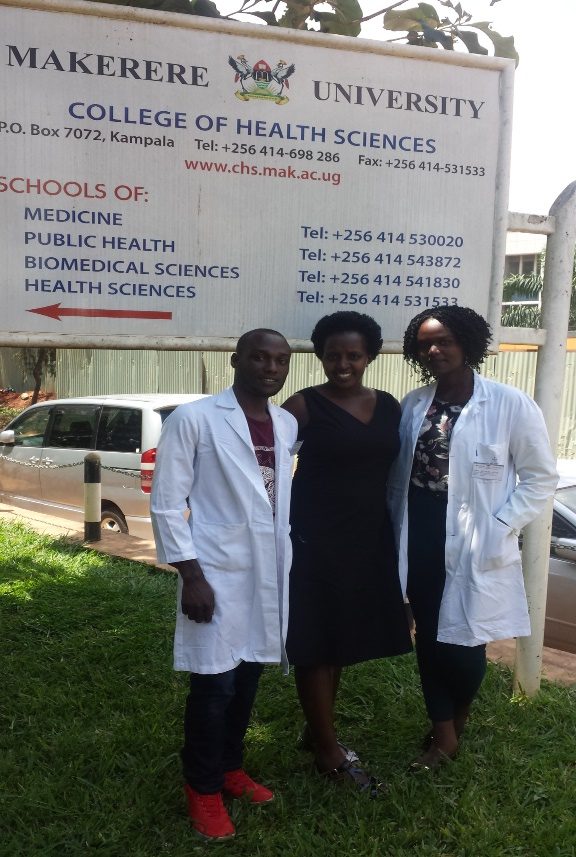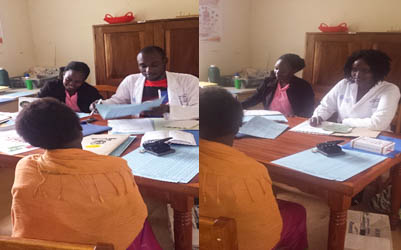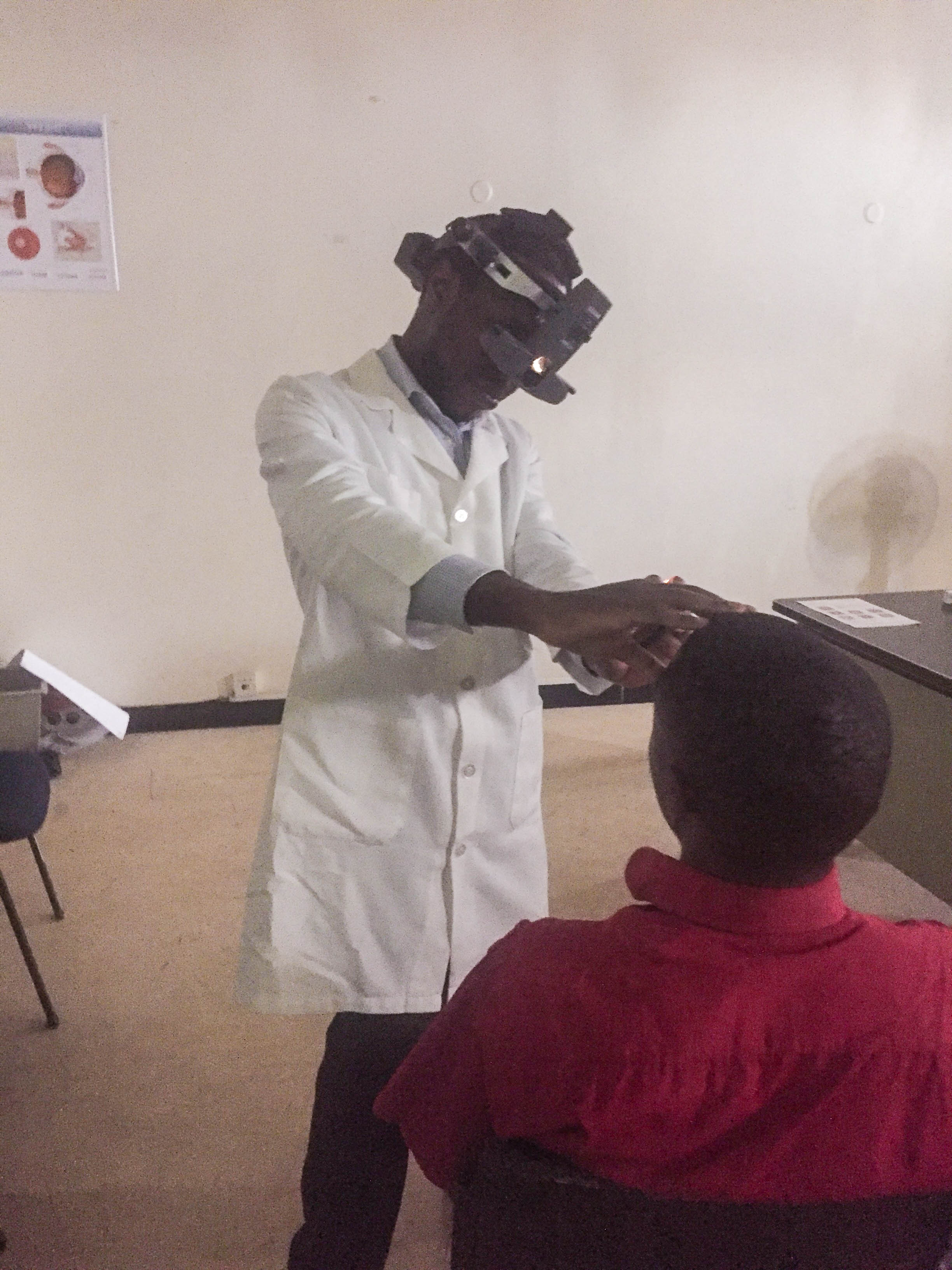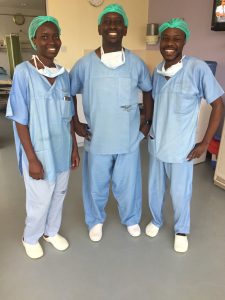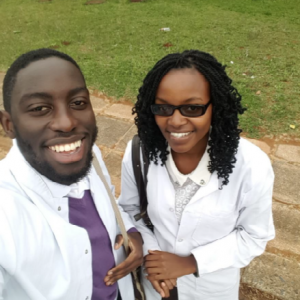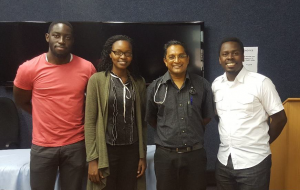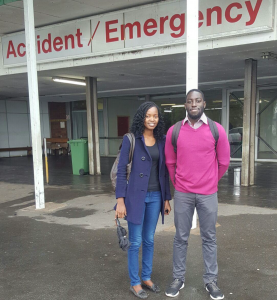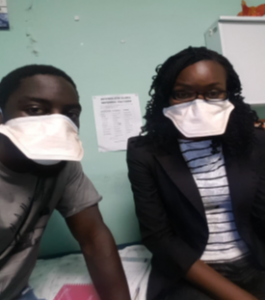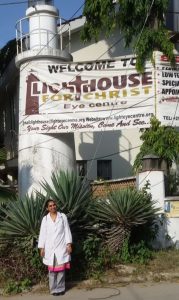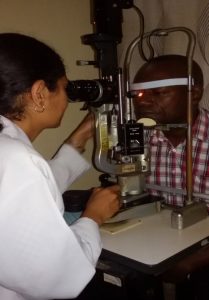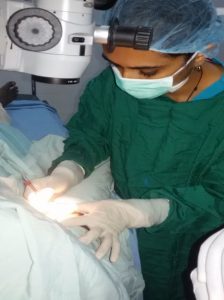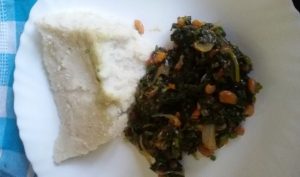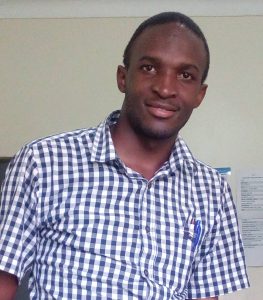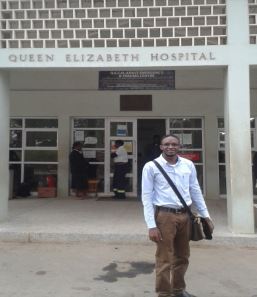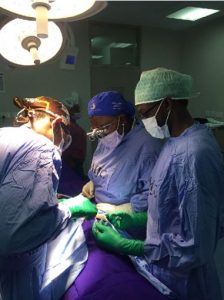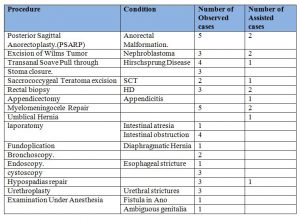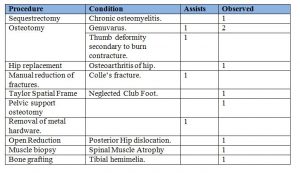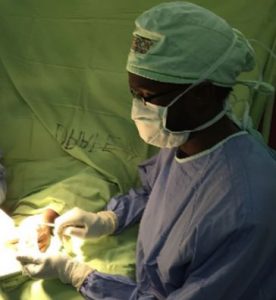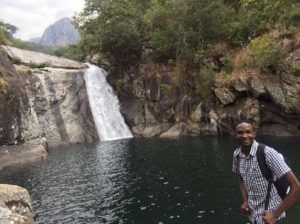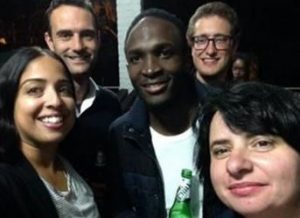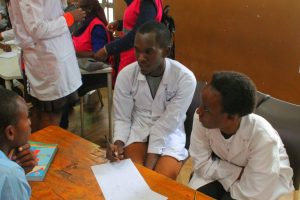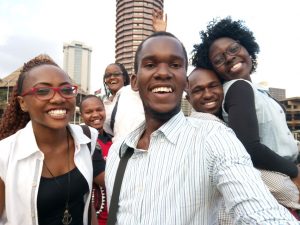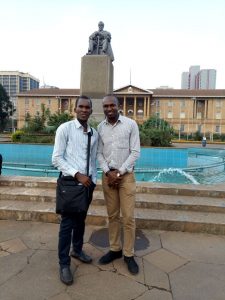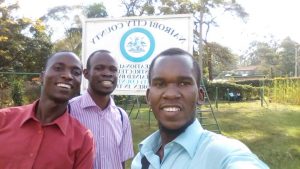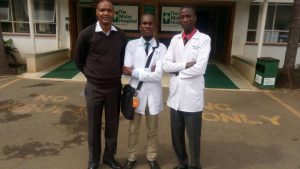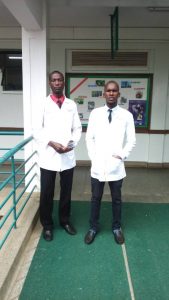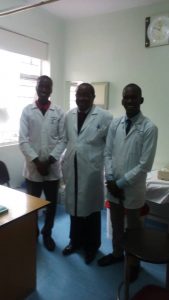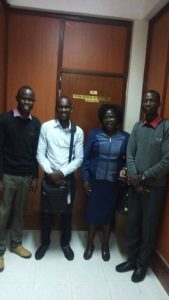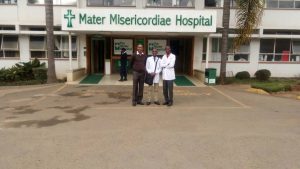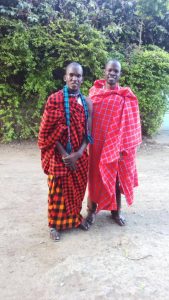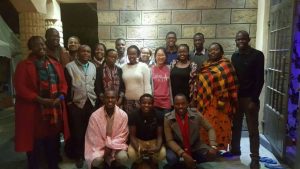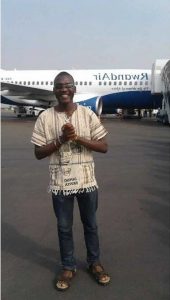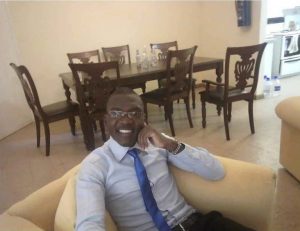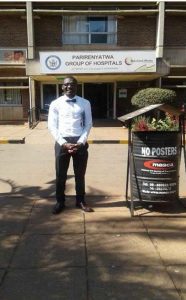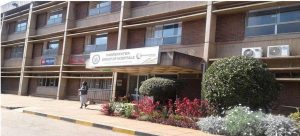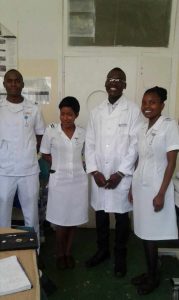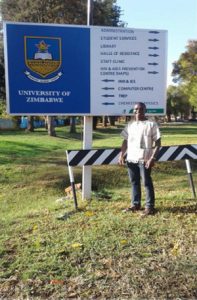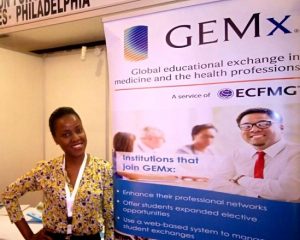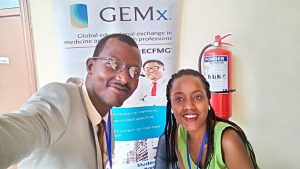NIZEYIMANA Eric and AKAYEZU Aline, 5th Year Medical Student from University of Rwanda. We completed GEMx Exchange on Family Medicine at Makerere University
INTRODUCTION
Our hearts were very full the first time we received an email confirming that we were chosen to be a part of this amazing elective. The Family Medicine is not yet initiated in Rwanda health system. This was a golden opportunity to learn more and bring back a package of knowledge to share with our colleagues.
It is the dream of every Medical student to do an exchange outside of their usual setting so that they work in another healthcare system to learn and have a different experience that’s why I can’t hesitate to say this was our turn to realize our own.
WELCOME TO MAKERERE UNIVERSITY
Our journey took 718 km2 from Kigali-Rwanda to Tororo-Uganda training center in Uganda, where the training about family medicine took place. Arriving at MAKERERE University, we met Ms. Phionah, the international students’ coordinator at this university. With warm welcomes, she gave an explanation about the exchange and introduced us to the rest of the team.
It was a great experience to travel the long distance on a bus. It was the first time, we took the time to observe the Uganda country, environment, and appreciate how well it is.
ACCOMMODATION
During our elective, we stayed at the Crystal Hotel. The hotel was close to the hospital. It was safe, comfortable and calm when you were studying. They had all kind of foods and it was delicious.
The hotel was close to the hospital. It was safe, comfortable and calm when you were studying. They had all kind of foods and it was delicious.
ORIENTATION AT TORORO DISTRICT HOSPITAL
Our 2nd day in Uganda was for the introduction to family medicine and orientation at training center, Tororo district hospital. We met with Dr. George Welishe and Dr. Okuuny Vincent, the senior consultants in Family Medicine who greeted us with warm welcomes. We had a tour of whole hospital, introducing us to all departments of the hospital. We visited patient hospitalization wards, general theater, labor and administration offices &staff, emergency ward, HIV patients department and antenatal and family planning services. Everyone was happy to host us and we were also happy to be among them and excited to be in different healthcare settings. It is a large district hospital, which has many departments.
The daily schedule was made by morning staff meeting which was followed by ward round, theater, or labor or other department visit in the hospital.
1.Morning staff meeting
Every morning we have presentations on the topics that we were given on schedule. The topics that was chosen by trainers according to two conditions: 1.The most common cases in medical career related to the family medicine in which they think that will be useful to us along our internship and medical career. The second condition is the cases that are mostly found in Uganda healthcare setting especially in Tororo district hospital. . Under consultant supervision, we had discussions in which they taught us on both our presented topic and presentation skills.
2. Hospitalization Patients, Internal Medicine wards round
We had a daily attendance of ward round with the rest of the team which was made by family medicine consultants, family medicine postgraduates, nurses, and other medical doctors. I gained more experience in patient clerking and presenting during this activity and from this I understood that medicine is the same all over the world because it was very exciting to be able to make a diagnosis for a patient from another setting and participate in patient management by the same knowledge.
This ward round also emphasized on bedside teaching according to the case as long as also that most of the attendants were students. This was occupying a big part of our exchange where we learned much as found more cases that we didn’t see in our healthcare setting. Here I can list sickle cell diseases associated with malaria which is more common in the pediatric setting here, sepsis secondary to septic abortion, HIV and TB were more frequent in general wards especially in young people. We have seen some special cases like Asthma attack, dog bite, and pregnancy on sickle cell disease.
We learned from all the cases and were involved in their management process. We can confirm without hesitation that we are confident in managing patients.
3. Gynecology and obstetrics department
This was another interesting and productive service that we rotated in. The main objective was to know what services they deliver and get experiences in them as a future clinician and the objective was achieved. The major services that we provided were TORCH screening (toxoplasmosis, other, rubella, cytomegalovirus, herpes simplex/HIV) and counseling on results, Prevention of Mother to child transmission of HIV, Family planning, Immunization, Examination of pregnant mothers to assess for any complications that might arise during pregnancy.
We experienced also on the procedures done included vaginal examination, head to toe examination focusing on the abdomen for the pregnant mothers to check for the fetal heart rate through the use of the fetoscope. The LEOPOLD Maneuver like palpation of the abdomen to check for the lie, presentation, and engagement of the fetus. Not only this but also in labor they taught us, conducting spontaneous vaginal delivery, neonatal examination, and resuscitation for the newborn with fetal distress and other complications.
We enjoyed the rotation since we could learn more from each other through discussion of patient’s condition and be sharing an idea with the rest of the team which was mostly made by midwives.
4. HIV patients clinic
In all the time we work at Tororo district hospital, we rotated also in HIV clinic. The services provided were history taking and physical examination for HIV patients to access drugs adherence, new HIV diagnosed patients counseling, viral load monitoring and shifting of patients from drugs line to another.
Of course, as a referral hospital, the number of attendants was big, At the time we helped around 80 patients and surprisingly the 2/3 was women and reason was that of the polygamy culture in Tororo community which makes the prevalence of the HIV infection to rise in women than in men
BENEFITS
We met friends and we made friendships, we learned much from each other and we made strong networks. Finally, we had fun.
SKILLS AND KNOWLEDGE GAINED
Four weeks at the Tororo district hospital for family medicine was productive beyond our expectations. Along all time, rotating in different departments we gain many skills in Family Medicine, the way it works and the services it provides. As long this specialty is not yet initiated in Rwanda health system, I hope to share with my colleague medical students, and other health professionals this skills or others who will be interested in family medicine. In addition to this, we gained also more about presentation skills.
The knowledge gained includes patient history taking and physical exams to list differential diagnosis, appropriate patients management, conducting a normal lobar and c/section delivery. Antenatal care includes Leopard maneuver and use of fetoscope and management and follows up of HIV patients.
CHALLENGES
All the time we spent in this amazing elective, the main challenge we meet is the languages. After arriving in the Tororo town, we have found that they are more local different languages spoken in the community which account more than 5 which also is related to different tribes with a different culture. This has brought some limitation during patients caring especially in history taking and management, explanation on medication taking and patient diseases education. So to handle this, we used to organize a team during ward round such that there is one health care provider who speaks both English and one of the local languages so that he/she will translate.
The other challenge we met was to work in low facilities hospital where some materials were not available especially medications and septic environment, which was a barrier in patients treated and also we thought it could be a source of spreading diseases among hospitalized patients. To handle this will need multidisciplinary involvement including Minister of Health in Uganda and other health institutes but we did some advocacy about the problems.
LESSON I LEARNT
Of course, learning is a continuous process, but in this elective, the first thing I learned is that every healthcare professional can deliver the health services to the community according to his or her level.
The 2nd lesson is that working in limited health facilities can be challenging in the medical career while you were delivering health services but it’s good and important to adapt and use the few we have effectively to help the patients
The 3rd lesson, learning from each other and sharing information and respecting each other is most important in terms of both helping patients and teaching during health care services delivered.
The 4th lesson is As a student I got a lot about professionalism at work during this elective at Tororo district Hospitals. The healthcare professionals were having a positive attitude of medics towards students and their work made me enjoy my stay and practice as a student there.
ACKNOWLEDGE
We want to express my sincere gratitude thanks to the executive committee of GEMx represented by Carol Noel Russo, GEMx Regional representative in Africa Faith Nawagi, the host coordinator at MAKERERE UNIVESITY Mrs. Phionah and my university of Rwanda GEMx coordinator, Dr. UWINEZA Annette and everyone who contributed to making this elective happen
It great pleasure to thank all confident you hard toward us and offer this opportunity in which we learned much skills and experience and all your commitment and effort you made to create a way so that the elective on Family Medicine at Makerere university lead to success.
Special are destined to our trainers, senior consultants in Family Medicine at TORORO District hospital, Dr. Welishe George and Dr. Okuuny Vicent with the rest of the team who showed strong commitment to teach us as much they can, we really highly appreciate their motivation and strategies they use during training health professionals and I wish they could spread that attitude among the rest healthcare professional trainers around the world.


